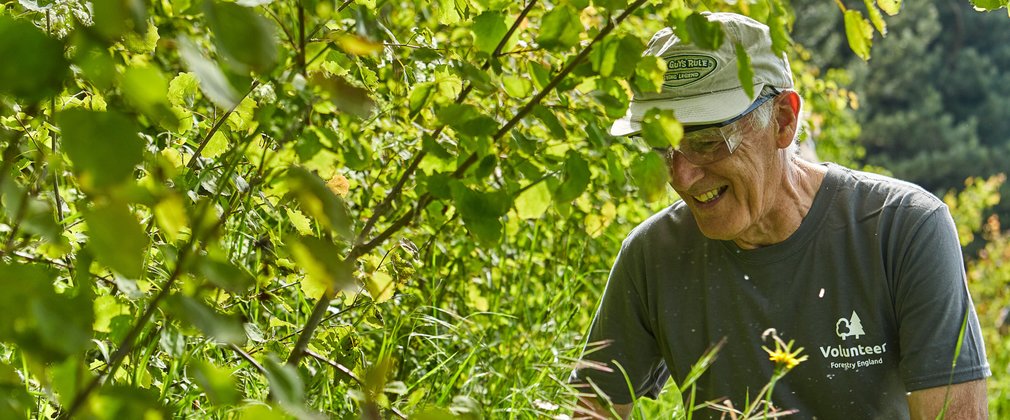
Volunteering in the Forest of Dean
What can I do?
Volunteers are critical in the work we do and we can achieve a lot more with their help.
Volunteers can get involved in as much or as little as they like. We have a range of tasks and activities from litter picking, tree guard removal and tree planting to trail maintenance and conservation works - to list just a few! It's a fun way to meet new people and learn new skills.
Here are just some of the groups and tasks they carry out.
Beaver volunteers
At Perry Hay we have welcomed two adults beavers into our exciting new 12-hectare enclosure. To help protect them, we need volunteers to walk the length of the fence to check its integrity on a rota basis.
Beechenhurst volunteers
Beechenhurst is our busiest visitor site in the Forest and we need volunteers to help us deliver excellent customer service. We are looking for people to help run our “ranger hatch”, an information point for visitors to ask questions and buy activity packs or memberships. We also need volunteers to help us teach visitors about the forest by providing fun activities, primarily during the school holidays.
Butterfly Conservation
Haugh Woods is a Site of Special Scientific Interest for its butterflies and moths, particularly the Wood White butterfly. There is plenty of coppicing during the winter and lots of opportunity for butterfly surveying in the summer moths.
Dymock Woods is recognised for its wild daffodils and moth species, with this in mind the focus here is coppicing and habitat maintenance, with the summers taken up with surveying.
Clearwell Meend
Meet once a month on the second Thursday to maintain and restore the mosaic of open space habitats on the Meend, including limestone grassland, calcareous grassland, and the pondscape. Activities include pond management, raking, scrub management, wildlife surveys and bracken bashing and cutting. Join in to learn some interesting history and enjoy stunning views towards the Black Mountains.
Cyril Hart Arboretum volunteers
The Cyril Hart Arboretum was established in 1915 with trees dating back to the early 1900s. We are looking for volunteers to help with planting, maintenance and trail inspection. Come and be part of the team that looks after our beautiful Arboretum which is home to over 200 tree species.
Dean Green Team
This group meet every Tuesday throughout the year carrying out a variety of wildlife conservation tasks in various locations across the Dean.
Dean Trail Volunteers
Meet twice a week at the Forest of Dean Cycle Centre to dig, maintain and build mountain bike trails and features with guidance and in partnership with Forestry England. To sign up to volunteer with this group, please visit their website.
Forest Waters
Forest waters aims to better understand, plan and improve how water moves across the Forest. By gathering information and making informed decisions we can restore our water courses, prevent flooding and make our woodlands more resilient in a changing climate. Volunteers will be involved in a range of tasks such as building woody debris dams, which replicate natural processes and blocking redundant drainage channels to slow the flow of water. We also need help with tree planting to restore woodland, and survey work to monitor the impact of interventions.
Friends of Jugshole
An ad hoc group who meet on a Thursday as and when the work is required. Mainly consisting of local residents to the Coalway and Broadwell areas who are passionate about preserving the pond known as Jugshole Pool. Activities include pond management, bracken bashing and cutting, and raking the wild flower meadow area in the autumn.
Frith Wood
Volunteers meet in Frith Wood, Ledbury on the last Wednesday of each month. The focus is on improving the habitat for mammals such as dormice, and rare, native plants by coppicing and clearing bramble. The coppiced wood is used to build ‘eco piles’ for insect habitats and is also donated to a local orchard project for use in their hedging. Volunteers also do some work to maintain the footpaths in the wood in partnership with Herefordshire County Council.
